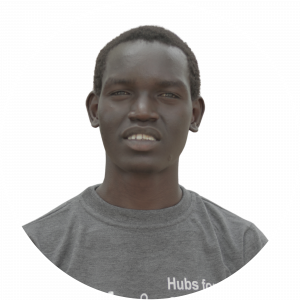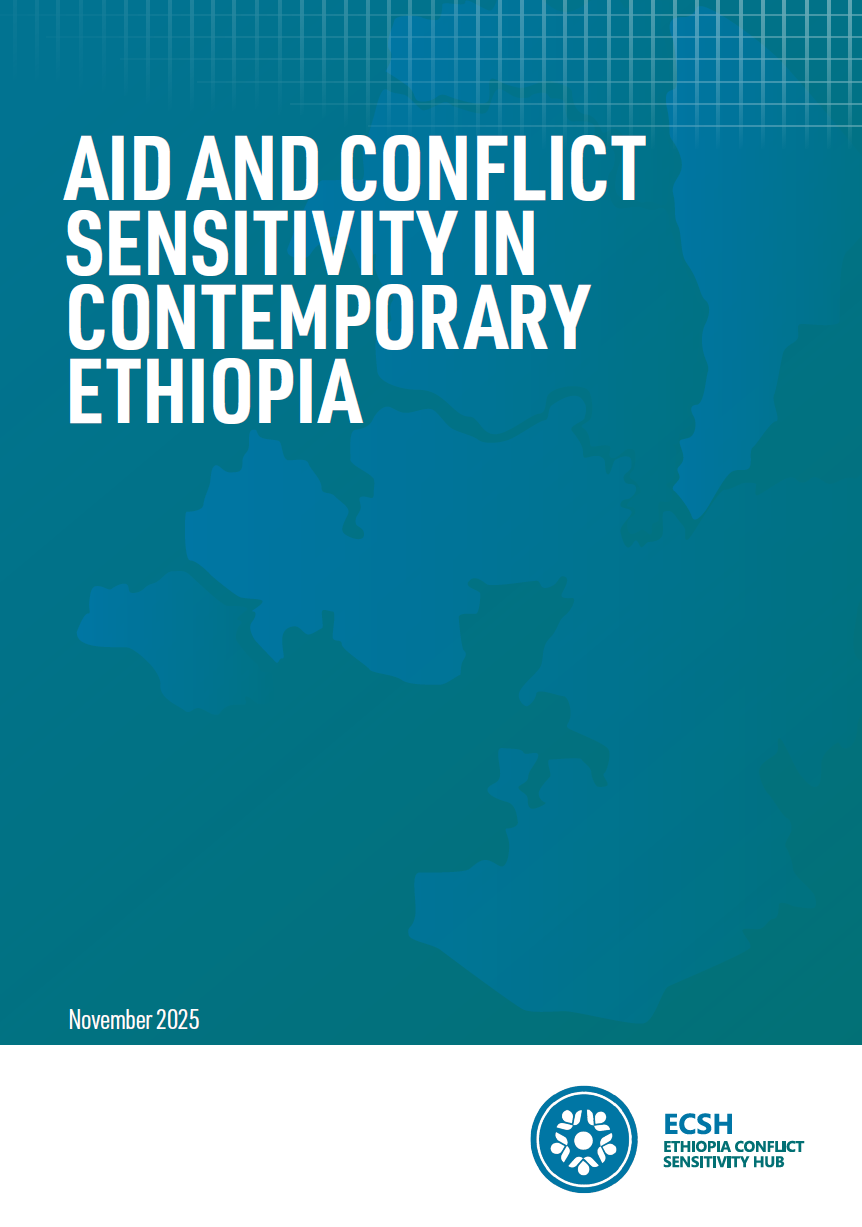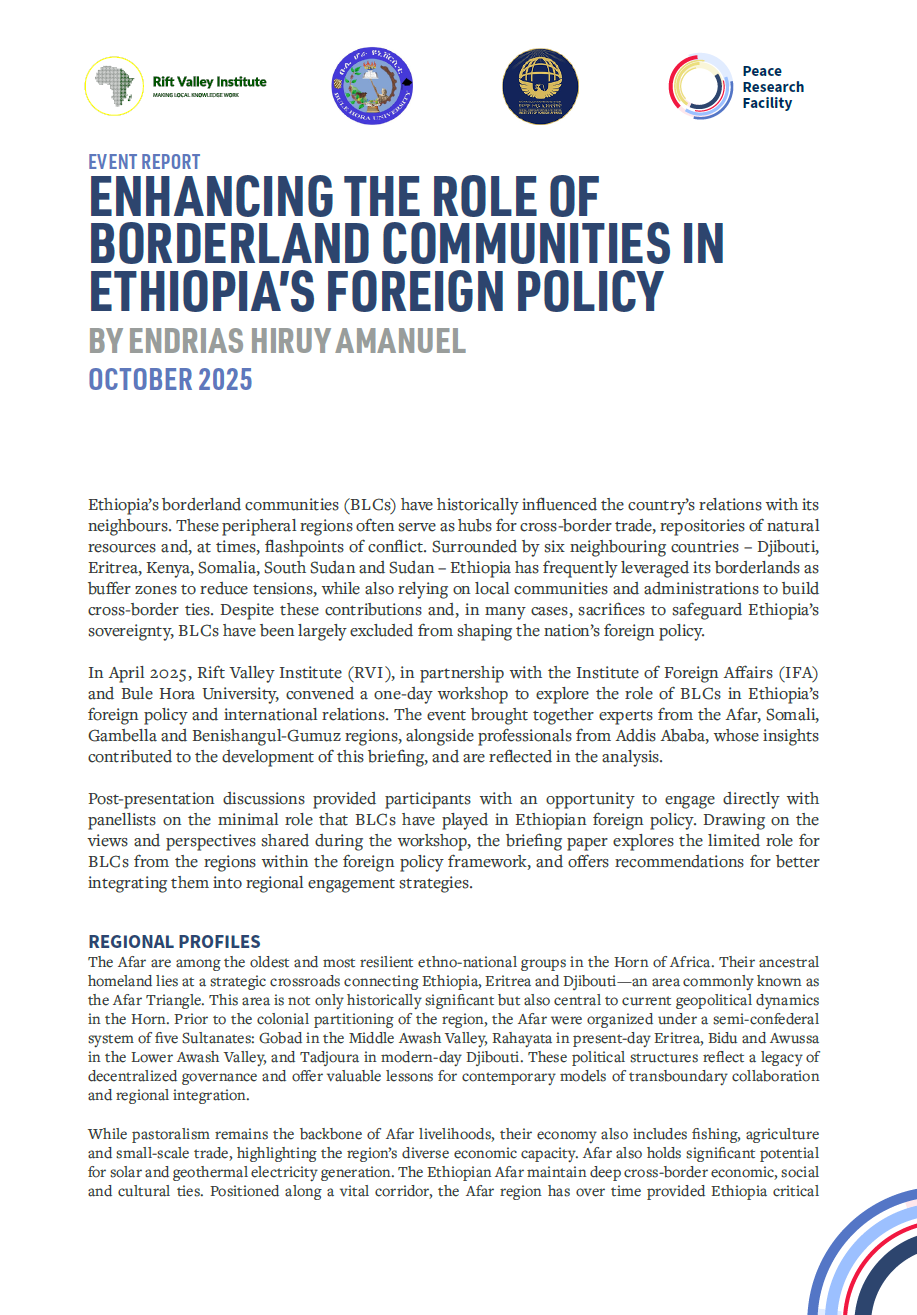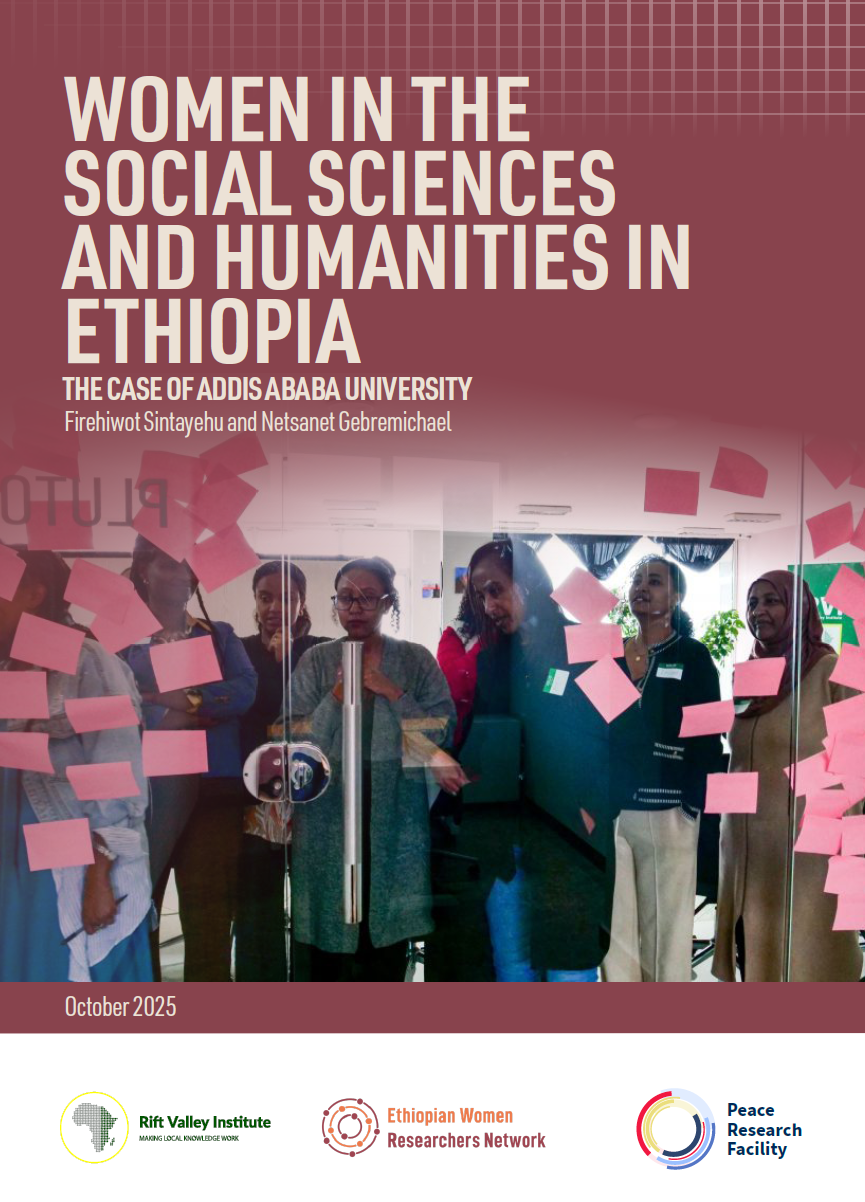This blog examines the social impact of the shifting course of the Nabek River in Kakuma refugee camp where, when the river overflows and changes direction, it sweeps away homes, forcing refugees to migrate internally.
By Robert Aharanya Claudio
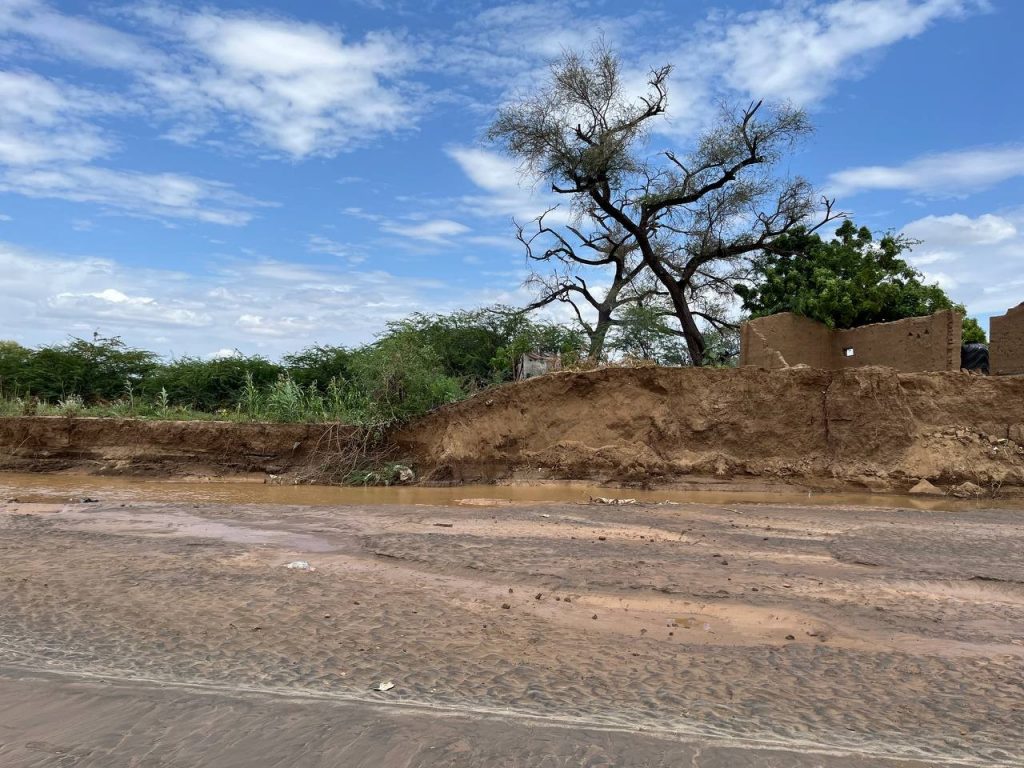
Introduction
In this blog, I look at the social consequences of climate events, such as destructive flash floods, and the beliefs arising from them, as well as the alliances and conflicts caused by changes in the course of the Nabek River, the narrower of two rivers that run through Kakuma refugee camp in north-west Kenya.In May 2024, about 30,000 refugees in Kakuma were displaced, and some of their homes destroyed, after heavy rain changed the course of the Nabek.[1] Beyond monetary loss, the loss of kinship ties caused stress to those refugees who faced the prospect of moving 35 km along the main road to Kalobeyei, a settlement created for integrating refugees into the local community long-term.
Kakuma is divided into four parts and then subdivided into Zones and Blocks. Although the first refugees to arrive there were from Southern Sudan, other nationalities—Somalia, Ethiopia, Burundi, Sudan, Uganda, Rwanda and the Democratic Republic of the Congo—now live there as well. They are largely confined to the camp, with restrictions placed by the Kenyan government on their movement outside.[2] Kakuma was set up in 1992 as a temporary solution, but has turned out to be a protracted one, with many forced to live there for a very long time. No urban planning was put in place for the increasing numbers of refugees and, by June 2024, Kakuma’s various camps and settlements hosted 289,861refugees, compared to the 70,000 for which it was designed.[3] Kalobeyei was set up in 2016 by Kenya’s county and national governments, as well as the UN High Commissioner for Refugees (UNCHR), to play a role in resettling part of Kenya’s refugee population, which in 2024 reached about 777,000 overall.[4]
Kakuma is located in Turkana County, and the host community are predominantly Turkana pastoralists. Some possess guns, which they use to protect their livestock, and sometimes to rob refugee communities and other neighbours. In this semi-arid region, the hosts are more affected by periods of drought because they rely on livestock for income, while refugees receive monthly food rations, even if some keep livestock and farm on a small scale. The relationship between the two communities is more complex than it looks: Some hosts depend on refugees for their livelihood, working for them; others feel compelled to steal from refugees during drought.
My research was conducted among South Sudanese refugees from Lotuko, Lopit, Acholi, Pari and Didinga communities, as well as among representatives from the camp and members of the host community. Key informant interviews included five refugees displaced by floods, one on the brink of displacement, three local administrators, a refugee security officer, a refugee woman farmer and two hosts—six women and six men. The refugees were from Kakuma 1, Zone 2, Blocks 3, 4, 5 and 11. When my research began in mid-August 2024, there was extensive flood damage to the whole of Block 3 and half of Block 2, and the Nabek River had already swept away parts of Block 5. Focus group discussions were carried out with three groups of South Sudanese—six women, seven boys and six men.
Superstitions and beliefs
What I discovered supports my contention that superstitious beliefs—brought from refugees’ native lands to their new places of settlement—surface amid climate events. In their native lands, for example, Lotuko believe the natural habitat has spiritual authorities. So, when I asked a 58-year-old Lotuko woman what had caused the Nabek River to change direction, she said, ‘They say it is its enyamani (guardian) that is causing the shift in the course of the river destroying these lands.’[5]
Others blamed locals for cursing the refugees’ luck. ‘I think this laga [seasonal river] is cursed and that’s why it is flowing towards the refugee community only and destroying their houses,’[6] said a member of the Pari ethnic group. He thought wenye nchi, that is the owners of the land, the host community, were behind this. His belief was echoed by another refugee respondent who said water running down from the highlands avoids Turkana living on the riverbank opposite refugees, making its way towards where refugees live instead. When I asked how that made him feel, he framed it in terms of a relationship: ‘We hear from those people [the host community] that … that side of the river is male and the other side is female, and they are trying to connect.’[7] A focus group respondent said much the same, that the Nabek tributary was determined to join the much wider river running right through the heart of Kakuma. ‘So, the woman is searching for a man, who is her husband, which is the Tarach River. And that is what caused the displacement of the people near the Nabek River.’[8] Such beliefs suggest to me that culture has a bearing on how social groups develop distinct patterns of life.
For their part, host communities in Kakuma and in Dadaab, a collection of camps in north-eastern Kenya with about 383,000 mostly Somali refugees, have been shown to attribute phenomena such as deforestation and drought to the arrival of refugees.[9]
Climate events often have dire consequences, with migration the only solution. One respondent had moved twice within Kakuma—first in 2021, when she lived in Block 3 and was among refugees resettled to Kalobeyei for fear of being swept away. She could not adapt, she said, because she had run a business in Kakuma and moving to Kalobeyei meant leaving her customers behind.[10] She added: ‘We decided to come back to Kakuma by our [own] means, buying a house in Block 5, which was far from the riverbank then, and abandoning the tent in Kalobeyei.’[11]
Unluckily, the river has shifted towards them, destroying more houses and neighbouring Blocks. By the time of our interview in mid-late 2024, the respondent’s fence had been swept away and her home was overlooking the main channel of the Nabek River.
Losing kinsmen as neighbours has also led to hostilities. Clashes erupted in Kalobeyei in June 2024 between Anuak from Ethiopia and Nuer from South Sudan, causing the temporary migration of members of both communities.[12] By 29 July, the clashes had caused at least four deaths, according to Kenya’s Daily Nation newspaper. Many refugees fled, leaving behind those who could not move. ‘We were staying, with fear… I couldn’t run, but my neighbours did… I was too old to run’, said an elderly woman respondent.[13] Her neighbours gone, her plight illustrated the loss of social support and kinship, if only temporarily. The destruction of two churches along the Nabek River in 2023, however, forms a more lasting example of this. These places of worship served as communal hubs, as well as sources of spiritual strength, spaces where local congregants found emotional support. Destroyed by flooding from the river, their congregants were forced to scatter, making it harder for them to rebuild their lives.
Among my respondents were refugees moved to Zone 1, at a spot where the Nabek has not yet displaced anybody. Their settlement is on what used to be a football (soccer) field. I found they were walking long distances to fetch water from pipes hanging loose out of a cliff of eroded soil. Two groups of people were settled there: The first was brought by the UNHCR, meaning essential services were provided and a water tap installed; the second, unwilling to move to Kalobeyei settlement, came on their own. The UNHCR distributed them mats, and:
Recorded our names and asked us if we wanted to relocate to Kalobeyei. … I didn’t want to move to Kalobeyei because of my disability and because I had a small job. I didn’t want to move because I supported my girls with this job. Moving will force me to leave the job because of the distance, and I won’t have anyone to help me.[14]
Meanwhile, hosts refuted refugees’ claims that they had intentionally shifted the river’s course, either through magic or conventional means, saying they were just as troubled by the refugees’ displacement. One, a casual worker for a refugee-owned shop, said he and many others relied on refugees for work.[15] Though the changing course of the river was not affecting them as badly, the possibility of losing work worried them in equal measure.
Alliances forged
When the Nabek River began to shift, refugees began to dig and fill sacks with soil. Their request to the UNHCR for more support was denied. Instead, they were provided with sacks. They organized a harambee (fundraising event) to collect money, which they used to hire a tractor. ‘Every household contributed 100 Kenya shillings [about 0.75 USD],’ said one respondent.[16]
Fundraising involved businesspeople in the Ethiopian market, which was thought to be at risk as well. But the communal cooperation was confined to refugees. ‘Unfortunately, the host community didn’t initially agree on the location we chose [for diverting the river], which led to tension,’ said the Block leader in charge.[17] The Kenyan government chief and the UNHCR had to be brought in to diffuse the tension.
Although the diversion ultimately failed, the process showed the potential for collaboration in the face of common threat. The UNHCR maintains it supports environmental conservation with four principles: prevention, participation, integration and cost-effectiveness. However, my findings show little concern for local solutions, such as the urgent need to address the course of the Nabek. Offers of humanitarian support and resettlement in Kalobeyei are provided instead, with the lack of effective flood-prevention strategies leaving many refugees in Kakuma feeling frustrated and vulnerable.
Conclusion
The shifting course of the Nabek River is viewed as a significant threat by refugee populations living in Kakuma, particularly as the solution being offered to them is internal migration. They have seen this shatter longstanding relationships between refugees already displaced by the river and their communities, despite the fact that it is clear that refugees only have their social networks to depend on to soften the effects of crises. Refugees find it hard to adapt outside their networks, in part because of their complicated relationship with the host community. This relationship, though often interdependent, has been worsened by the protracted uncertainty of their legal status and the impact on them of flash floods along the Nabek. South Sudanese refugees may interpret climate disasters using beliefs from their native lands, but even while doing so, they try to avert the course of this shifting river in order to maintain the normal lives they have known—and been used to—rather than migrating away from their social and economic networks.
About the author
Robert Aharanya Claudio is a South Sudanese refugee born and raised in the Kakuma Refugee Camp. He is currently pursuing a Philosophy, Politics and Economics degree at Parami University. Robert is serving as a global engagement fellow at Open Society University Network and Bard College International Network, working to promote and co-ordinate civic engagement projects across this network.
Acknowledgment
This blog has been produced as a result of Robert Aharanya Claudio’s training with the Rift Valley Institute’s (RVI) Research Communities of Practice (RCoP) project, a partnership carried out with funding from the Open Society University Network Hubs for Connected Learning Initiatives. It therefore reflects the views of the author and not the views or position of the Rift Valley Institute. RCoP is among several RVI flagship projects that support the professional development of early career scholars in eastern and central Africa through training, mentorship and the dissemination of research outputs. It is a values–driven project based on RVI’s long-term experience and presence in the region, built around a community of practitioners and academics with a common interest in the professional development of early career researchers. In the third phase of the project, RVI trained seven early career scholars from Kakuma refugee camp between May and October 2024.
This blog was edited by Catherine Rosemary Bond.
====
[1] ‘Q&A on the Flooding Status of Kakuma Refugee Camp in Kenya’, Danish Refugee Council. Accessed 28 October 2024, https://www.drc.ngo/resources/news/q-a-on-the-flooding-status-of-kakuma-refugee-camp-in-kenya/.
[2] ‘Kakuma Refugee Camp’, United Nations High Commissioner for Refugees. Accessed 28 October 2024, https://www.unhcr.org/ke/kakuma-refugee-camp.
[3] ‘Kenya: Registered Refugees and Asylum-seekers’, United Nations High Commissioner for Refugees. Accessed 29 October 2024, https://www.unhcr.org/ke/wp-content/uploads/sites/2/2024/06/Kenya-Statistics-Package_31-May-2024.pdf.
[4] ‘Kalobeyei Settlement’, United Nations High Commissioner for Refugees. Accessed 30 October 2024, https://www.unhcr.org/ke/kalobeyei-settlement.
[5] Interview with Lotuko woman, Kakuma, 20 August 2024.
[6] Interview with member of Pari community, Kakuma, 20 August 2024.
[7] Interview with refugee, Kakuma, 25 August 2024.
[8] Participants in a focus group discussion, Kakuma, 23 August 2024.
[9] Fred Ikanda, ‘Deteriorating Conditions of Hosting Refugees: A Case Study of the Dadaab Complex in Kenya’, African Study Monographs 29(1): 29–49.
[10] Interview with refugee, Kakuma, 24 August 2024.
[11] Interview with refugee, Kakuma, 24 August 2024.
[12] Sammy Lutta, ‘Refugees Flee to Ruiru After Deadly Clashes Claim Four Lives at Kakuma’, Nation, 29 July 2024.
[13] Interview with elderly woman, Kalobeyei, 20 August 2024.
[14] Interview with refugee displaced from Block 5, Kakuma, 24 August 2024.
[15] Interview with casual worker, Kakuma, 30 August 2024.
[16] Interview with refugee, Kakuma, 24 August 2024.
[17] Interview with Block Leader, Kakuma, 29 August 2024.

